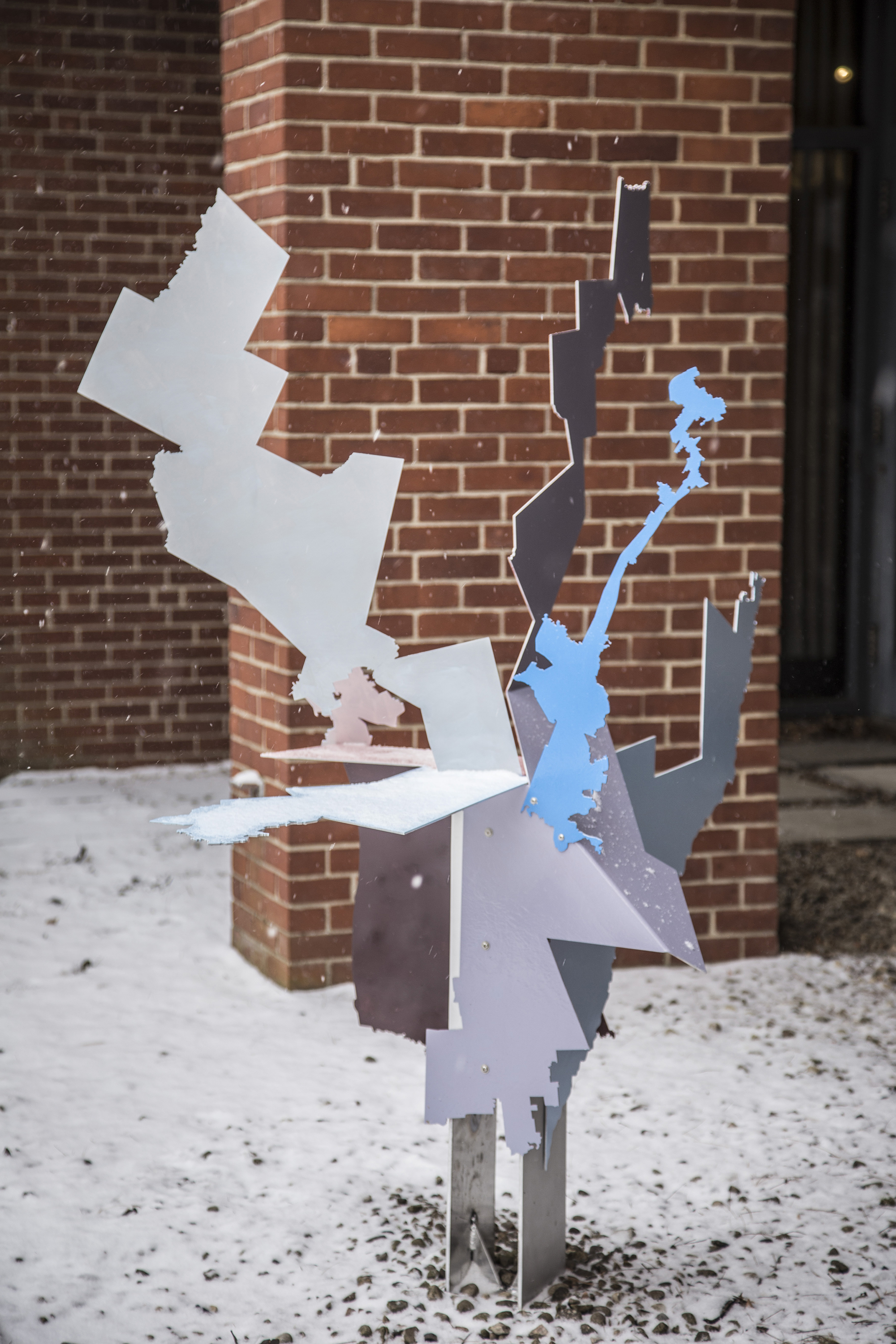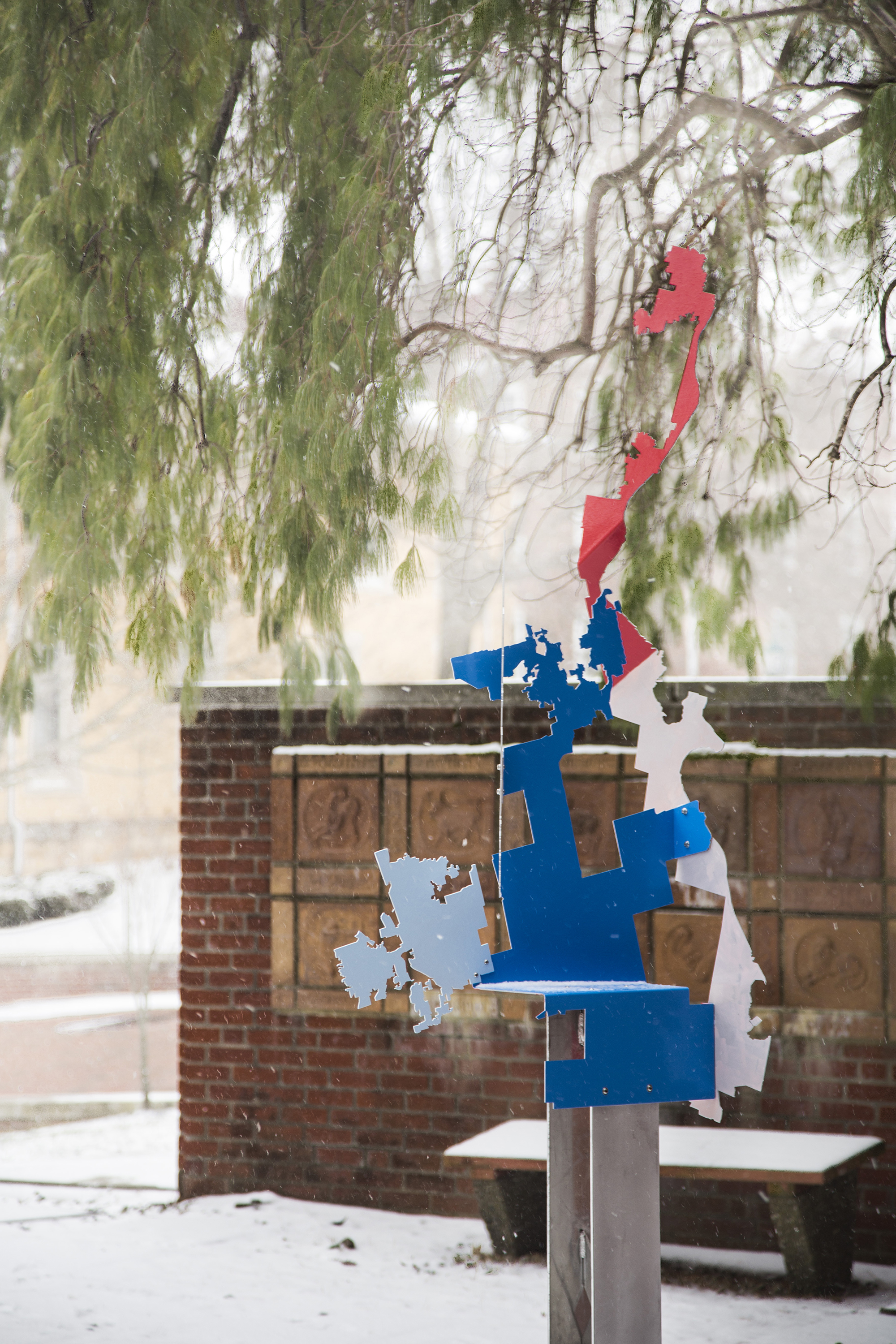

Gerrymandered
2019Ohio 13, 9, 11, and 3.
Texas 28, 15, 34, 35, and 20.
Texas 28, 15, 34, 35, and 20.


Gerrymandering is the manipulation of the boundaries of an electoral constituency to favor one political party over another, and it is a highly developed process in many states. “Packing” is one strategy to condense all of the voters of one party into fewer singular districts. The set of outdoor sculptures utilizes the shapes of nine of the most gerrymandered congressional districts of our current Congress. Gerrymandering is a form of drawing, it is partisan border shaping, and its aesthetics open great potential for visual questions. While the shapes themselves adhere only to the logics of deeply partisan border creation, they are perhaps more useful for unimaginable sculptures offering exits from the tensions of some of our most complex political issues.





The shapes are bent and stacked in precarious situations, drawing attention not only to the ridiculous and fantastic forms of these districts, but also to how the politics of redistricting the borders of voting groups is a political tactic stacked against an equitable democracy.